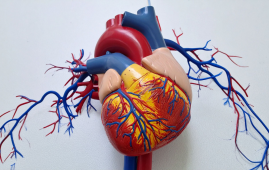

To combat blood diseases like lymphoma and leukemia, researchers working out of the Roy Blunt NextGen Precision Health Building have created a ground-breaking procedure.
Researchers from the University of Missouri School of Medicine have created a method for labeling donor bone marrow cells for transplant such that the immune system will only attack malignant cells and leave good tissue alone. Graft-versus-host disease (GVHD), a frequent occurrence when transplanted donor immune cells assault both malignant and healthy cells in the recipient, is one of the reasons bone marrow transplants are frequently a last resort for patients with blood malignancies.
“Our ability to biologically label these donor immune cells so that they will attack cancerous cells in the host and then stop themselves from attacking healthy tissue offers new hope that bone marrow transplants can be safer and more effective for patients,” said co-lead researcher, Esma S. Yolcu, Ph.D., professor of Child Health and Molecular Microbiology and Immunology.
The stem cells in bone marrow have tremendous potential to combat autoimmune diseases, such as type-1 diabetes, and blood cancers, such as leukemia, lymphoma, and multiple myeloma. It is critical to solving the puzzle of GVHD to unlock the full potential of bone marrow cell transplant treatment regimens.”
Yolcu and Haval Shirwan, Ph.D., associate director of the Immunomodulation and Regenerative Medicine Program at Ellis Fischel Cancer Center and professor of Child Health and Molecular Microbiology and Immunology, created the ProtEx platform technology to produce recombinant biologics that direct immune cells to achieve a specific therapeutic result.
In order to prevent GVHD, engineered donor cells have instructions on their surface that tell the transplanted immune cells to attack only the malignant cells before destroying themselves and attacking healthy tissue in the host.
“This approach has significant potential as a treatment on its own or in combination with other clinical regimens to increase the efficacy of stem cell transplants,” said Shirwan. “The process of engineering the donor cells is straightforward and efficient, making it suitable for clinical translation.”
According to their study to date, the ProtEx-modified immune cells have been successful in treating GVHD after transplantation in mice and in a mouse model that has been made to resemble a human. The recipient’s immune system was not adversely affected by the tailored cell transplant and acute GVHD was effectively avoided. As a preliminary step to clinical translation for the treatment of hematological tumors, the idea is currently being investigated for testing in a large animal model of GVHD.
Yolcu and Shirwan’s research was recently published in Blood Advances, entitled “Engineering donor lymphocytes with Fas ligand protein effectively prevents acute graft-versus-host disease.” The lead authors disclosed that they have a provisional patent on using SA-FasL-engineered cells as a prophylactic approach for acute GVHD.
The researchers also recently received a National Institutes of Health grant for their research at the Roy Blunt NextGen Precision Health Building on a treatment for type-1 diabetes that uses transplanted stem cells derived from insulin-producing cells to replace the need for regular insulin injections.
more recommended stories
 How the Uterus Senses Force During Labor: New Insights
How the Uterus Senses Force During Labor: New InsightsA new study published in Science.
 Fat-Free Mass and Brain Outcomes in Preterm Babies
Fat-Free Mass and Brain Outcomes in Preterm BabiesEarly Fat-Free Mass May Hold the.
 How Hormones Shape Dopamine-Driven Learning
How Hormones Shape Dopamine-Driven LearningNYU Study on Hormones and Cognitive.
 Protein Pair Guides Chromosome Alignment in Mitosis
Protein Pair Guides Chromosome Alignment in MitosisKey Points A joint research team.
 Intensive mind-body retreat rapidly alters brain function
Intensive mind-body retreat rapidly alters brain functionAn intensive mind-body retreat combining meditation,.
 Citrus and Grape Compounds Help Prevent Type 2 Diabetes
Citrus and Grape Compounds Help Prevent Type 2 DiabetesA new clinical trial highlights the.
 Personalized Pain Care Transforms Parkinson’s Treatment
Personalized Pain Care Transforms Parkinson’s TreatmentNew UniSA research underscores the urgent.
 Genetic Diversity Explains Obesity Risk Differences
Genetic Diversity Explains Obesity Risk DifferencesCross-ancestry Study Identifies Novel Obesity Genes.
 Meniscal Tear and OA Pain Improved by Home Exercise
Meniscal Tear and OA Pain Improved by Home ExerciseHome Exercise Proves Effective for Knee.
 AI ECG Model Outperforms Standard STEMI Triage
AI ECG Model Outperforms Standard STEMI TriageNovel AI ECG Model Outperforms Standard.

Leave a Comment